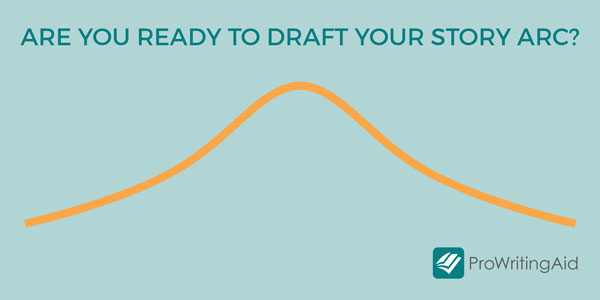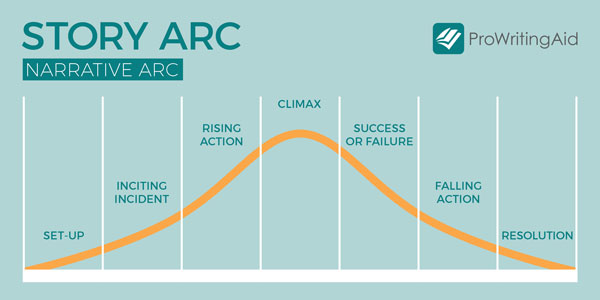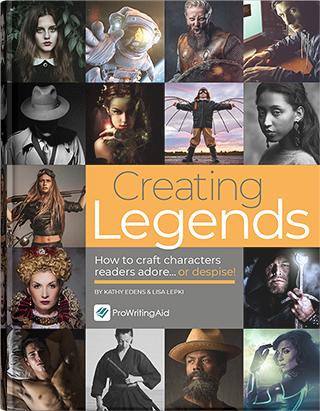
A story arc (sometimes called the narrative arc) is a more poetic way of saying that each story must have a beginning, a middle, and an end—or Act One, Act Two, and Act Three. This has been the guiding template of stories since the ancient Greeks started writing them and holds true whether you’re writing fiction or non-fiction.
Where authors fall down on story arc is when nothing much happens to the main character by the end of the book. They haven’t been tested in some profound way.
Story Arcs and Character Arcs
Your story arc and character arc should be melded together in such a way you’re not sure where one begins and the other ends. As your main character struggles, endures, and overcomes throughout the story arc, she naturally changes as a character by the end of the story. You can’t have a story arc without a character arc.
We’ll cover character arc in another article. For now, know that the two play off of each other.
In a Word, Here's What’s Important: Action
Your main character must be confronted by action: danger, threats, seduction, tests of bravery, moral dilemmas, or physical or emotional assaults, to name a few. Consider the story arc of The Great Gatsby. Gatsby starts out as a poor man who falls in love with a rich girl. He works hard to change his circumstances and win the girl. Then there’s the climactic scene and the denouement. Everyone changes to a degree by the end.
A good story starts with a bang or a hook, something to get the reader’s attention, and quickly accelerates to more action—Act One. Act Two, or the middle, is intertwined throughout with scenes of rising drama, suspense, or intensity and scenes of calm deliberation to let your readers catch their breath. Act Three culminates in a climax where the character is changed in some fundamental way, and then the tension falls back down until you’ve reached a satisfactory closure.
What Does a Story Arc Look Like?
Story arcs look like a giant bell curve with the story starting at ground zero and rising, rising, rising, until it hits the climax point at the height of the curve. Then the arc starts to gradually drop back until you’ve hit level ground again.

Or it can look like a pyramid where each block is a scene that builds up the pyramid until the apex and then slowly comes down the other side until you’re at the denouement.
If you’re having problems identifying your story arc, graph your story on paper to ensure that the action rises, falls a little, rises even more, falls a slight bit, and keeps rising until reaching the climax. You might end up with something that looks like a bell curve, or you might end up with something that looks like a stock market index. Either way, your action should consistently raise the stakes until it reaches the peak.
Want to delve a little deeper into narrative structure diagrams? Have a look at Ingrid Sundberg’s great diagram.
Your Story Arc is Your Guide to Plotting
Story Arc deals with the overall layout of your story, how it is broken up into chapters and scenes, what is the conflict and climax, and what is the final resolution. Plot is the specific series of events that make up your story.
You need to have the big picture figured out first (the story arc) before you can start plotting how you’ll get there. Each point in your plot occurs in a particular order and relates to the other plot points somehow.
We talk more about plotting in this article. For now, just remember that your story arc and plot work together to create the DNA of your story.
How to Create Your Story Arc
Nigel Watts wrote in his book Writing a Novel and Getting Published that your story arc should follow these eight points, in order:
- Stasis. This is the current situation you find your main character in.
- Trigger. This is an inciting event that changes the course for your main character.
- Quest. The trigger results in a quest for your main character to achieve a goal.
- Surprise. These are complications that prevent your main character from achieving his goal.
- Critical Choice. This is when your main character chooses what path to take and confronts the obstacles.
- Climax. The critical choice results in the climax, the peak of tension in your story.
- Reversal. Your character is changed in some way.
- Resolution. The story ends with a satisfactory closure.
This is a good road map to help you generate the higher level of story arc, where you want the story to go, and how things will change. We also talk briefly about narrative arc in our article, Time to Punch Up Your Narrative Arc and Character Development in case you want a simple way to tighten things up.
In future articles, we’ll explore how to take your story arc and plot out your scenes to move your story forward. We’ll also cover how to intertwine your character arc with your story arc.
Until then, happy writing!


